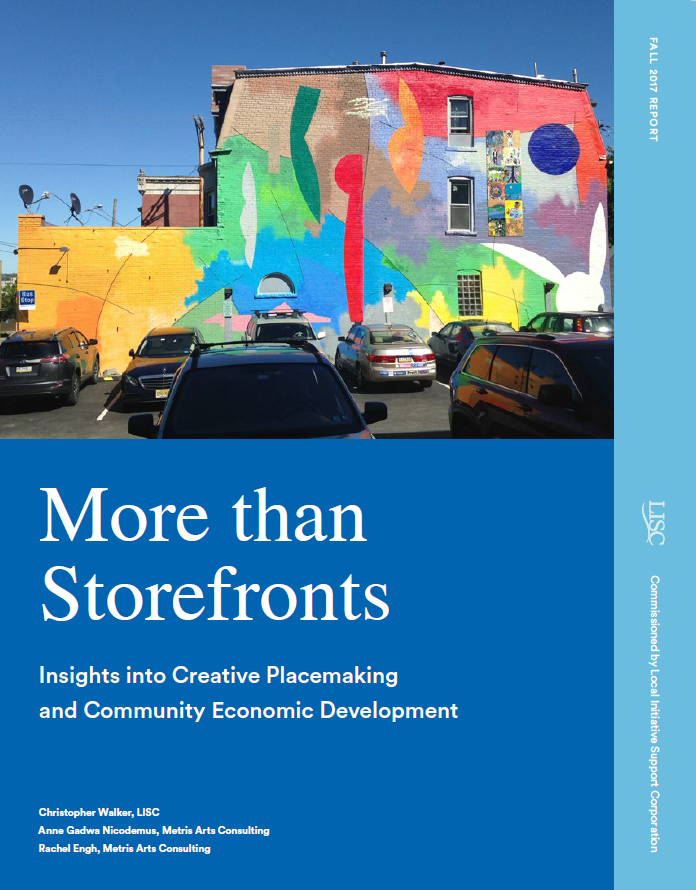More than Storefronts
A new report from LISC’s Creative Placemaking team looks at how our investments in artists, art-related businesses and cultural organizations have fueled economic development in surrounding communities. An investigation into six programs, in places ranging from rural Louisiana to New Haven, Connecticut, reveal that arts and culture can form a critical strand in a comprehensive economic strategy and strengthen the social fabric and dynamism of a community at the same time.
Insights into Creative Placemaking and Community Economic Development
Creative placemaking offers community economic developers a demonstrably effective way to encourage rural and neighborhood commercial district revitalization.
This paper draws on six case studies of programs that have used arts and culture to help spur economic revitalization of low-income areas, from Cajun and Louisiana Creole culture in rural Louisiana to creative funding for a dance and performance nonprofit in San Francisco to affordable live-work space in Cleveland. It examines how local efforts to explicitly invest in artists, arts-related businesses, and arts-and-cultural organizations can help advance community economic development and what it takes to connect arts and culture as an economic strategy with simultaneous efforts to strengthen the social fabric in the community and advance class, racial, or cultural equity, as well.
In 2015, the Local Initiatives Support Corporation (LISC) initiated its Creative Placemaking Program, which embraces arts-and-cultural approaches to community change, on the belief that such strategies can help communities take on some of the chronic challenges of community disinvestment. As LISC conceives it, creative placemaking consists of efforts in three interrelated domains: culturally relevant physical transformation, community cultural development, and investment in arts and culture as a community economic engine, particularly through the formation of an arts-and-cultural economic cluster.
An emphasis on the role of arts and culture in community economic development raises several important questions about creating the best benefits from these efforts, which this paper will endeavor to answer. What kind of economic benefits do explicit efforts to cultivate arts and cultural activities produce in low-income communities? How were these benefits realized? Are there distinctive features of arts-andculture-led economic development that practitioners should be aware of? Can these efforts advance equity among races, classes, and cultures in the communities where they are applied?
To develop the findings presented in this paper, we reviewed the relevant literature and interviewed people with informed opinions about the communities and initiatives we chose to investigate. We interviewed two people per case study—an artist or culture bearer participating directly in the work and an observer who could provide high-level insights into the local context and policies at play. In two of the six cases, we drew on a more extensive range of interviews conducted in the field. These cases—Pittsburgh’s Penn Avenue Arts District and Indianapolis’s Fountain Square—are more extensively documented in separate publications. Read the full report [+]...
